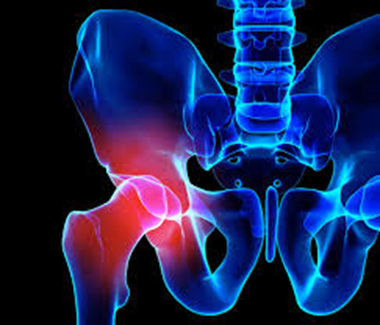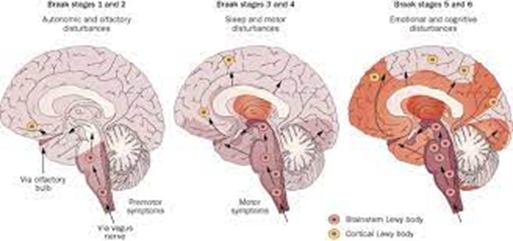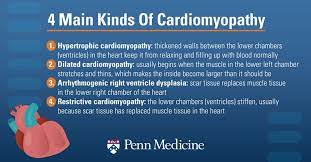Hip
replacement
Overview
During hip replacement, a
surgeon removes the damaged sections of your hip joint and replaces them with
parts usually constructed of metal, ceramic and very hard plastic. This
artificial joint (prosthesis) helps reduce pain and improve function.
Also called total hip
arthroplasty, hip replacement surgery might be an option for you if your hip
pain interferes with daily activities and nonsurgical treatments haven't helped
or are no longer effective. Arthritis damage is the most common reason to need
hip replacement.
Why it's done
Conditions that can damage
the hip joint, sometimes making hip replacement surgery necessary, include:
Osteoarthritis.
Commonly known as wear-and-tear arthritis, osteoarthritis damages the slick
cartilage that covers the ends of bones and helps joints move smoothly.
Rheumatoid arthritis.
Caused by an overactive immune system, rheumatoid arthritis produces a type of
inflammation that can erode cartilage and occasionally underlying bone,
resulting in damaged and deformed joints.
Osteonecrosis. If
there isn't enough blood supplied to the ball portion of the hip joint, such as
might result from a dislocation or fracture, the bone might collapse and
deform.
You might consider hip
replacement if you have hip pain that:
Persists, despite pain
Worsens with walking, even with a cane or walker
Interferes with your sleep
Makes it difficult to get
dressed
Affects your ability to go
up or down stairs
Makes it difficult to rise
from a seated position
Request an Appointment at
Mayo Clinic
Risks
Risks associated with hip
replacement surgery can include:
Blood clots. Clots can form
in your leg veins after surgery. This can be dangerous because a piece of a
clot can break off and travel to your lung, heart or, rarely, your brain. Your doctor
may prescribe blood-thinning medications to reduce this risk.
Infection.
Infections can occur at the site of your incision and in the deeper tissue near
your new hip. Most infections are treated with antibiotics, but a major
infection near your prosthesis might require surgery to remove and replace the
prosthesis.
Fracture.
During surgery, healthy portions of your hip joint might fracture. Sometimes
the fractures are small enough to heal on their own, but larger fractures might
need to be stabilized with wires, screws, and possibly a metal plate or bone
grafts.
Dislocation.
Certain positions can cause the ball of your new joint to come out of the
socket, particularly in the first few months after surgery. If the hip
dislocates, your doctor might fit you with a brace to keep the hip in the
correct position. If your hip keeps dislocating, surgery is often required to
stabilize it.
Change in leg length. Your
surgeon takes steps to avoid the problem, but occasionally a new hip makes one
leg longer or shorter than the other. Sometimes this is caused by a contracture
of muscles around the hip. In this case, progressively strengthening and
stretching those muscles might help. You're not likely to notice, small
differences in leg length after a few months.
Loosening.
Although this complication is rare with newer implants, your new joint might
not become solidly fixed to your bone or might loosen over time, causing pain
in your hip. Surgery might be needed to fix the problem.
Nerve damage.
Rarely, nerves in the area where the implant is placed can be injured. Nerve
damage can cause numbness, weakness and pain.
Need for second hip
replacement
Your prosthetic hip joint
might wear out eventually, especially if you have hip replacement surgery when
you're relatively young and active. Then you might need a second hip
replacement. However, new materials are making implants last longer.
How you prepare
Before surgery you'll meet
with your orthopedic surgeon for an exam. The surgeon will:
Ask about your medical
history and current medications
Examine your hip, paying
attention to the range of motion in your joint and the strength of the
surrounding muscles
Order blood tests, and an
X-ray. An MRI is rarely needed
This preoperative evaluation
period is a good time for you to ask questions about the procedure. Be sure to
find out which medications you should avoid or continue to take in the week
before surgery.
Because tobacco use can
interfere with healing, stop using tobacco products for at least a month before
surgery and for at least two months after surgery. If you need help to quit,
talk to your doctor.
Don't have dental work,
including teeth cleaning, two weeks before surgery.
What you can expect
When you check in for your
surgery, you'll be asked to remove your clothes and put on a hospital gown.
You'll be given either a spinal block, which numbs the lower half of your body,
or a general anesthetic.
Your surgeon might also give
you a nerve block by injecting an anesthetic around nerves or in and around the
joint to help block pain after your surgery.
During the procedure
The surgical procedure takes
a few hours. To perform a hip replacement, your surgeon:
Makes an incision over the
front or side of your hip, through the layers of tissue
Removes diseased and damaged
bone and cartilage, leaving healthy bone intact
Implants the prosthetic
socket into your pelvic bone, to replace the damaged socket
Replaces the round ball on
the top of your femur with the prosthetic ball, which is attached to a stem that
fits into your thighbone
Techniques for hip
replacement are constantly evolving. Surgeons continue to develop less invasive
surgical techniques, which might reduce recovery time and pain.
After the procedure
After surgery, you'll be
moved to a recovery area for a few hours while your anesthesia wears off.
Medical staff will monitor your blood pressure, pulse, alertness, pain or
comfort level, and your need for medications.
How long you stay after
surgery depends on your individual needs. Many people can go home that same
day. You'll be asked to breathe deeply, cough or blow into a device to help
keep fluid out of your lungs.
Blood clot prevention
After your surgery, you'll
be at increased risk of blood clots in your legs. Possible measures to prevent
this complication include:
Moving early. You'll be
encouraged to sit up and walk with crutches or a walker soon after surgery.
This will likely happen the same day as your surgery or on the next day.
Applying pressure.
Both during and after surgery, you might wear elastic compression stockings or
inflatable air sleeves similar to a blood pressure cuff on your lower legs. The
pressure exerted by the inflated sleeves helps keep blood from pooling in the
leg veins, reducing the chance that clots will form.
Blood-thinning
medication. Your surgeon might prescribe an injected or
oral blood thinner after surgery. Depending on how soon you walk, how active
you are and your overall risk of blood clots, you might need blood thinners for
several weeks after surgery.
Physical therapy
A physical therapist might
help you with exercises you can do in the hospital and at home to speed
recovery.
Activity and exercise must
be a regular part of your day to regain the use of your joint and muscles. Your
physical therapist will recommend strengthening and mobility exercises and will
help you learn how to use a walking aid, such as a walker, a cane or crutches.
As therapy progresses, you'll usually increase the weight you put on your leg
until you're able to walk without assistance.
Home recovery and
follow-up care
Before you leave the
hospital, you and your caregivers will get tips on caring for your new hip. For
a smooth transition:
Arrange to have a friend or
relative prepare some meals for you
Place everyday items at
waist level, so you won't have to bend down or reach up
Consider making some
modifications to your home, such as getting a raised toilet seat if you have an
usually low toilet
Put things you need, such as
your phone, tissues, TV remote, medicine and books near the area where you'll
be spending most of your time during recovery
Six to 12 weeks after
surgery, you'll have a follow-up appointment with your surgeon to make sure
your hip is healing properly. If recovery is progressing well, most people
resume at least some version of their normal activities by this time. Further
recovery with improving strength will often occur for six to 12 months.
Results
Expect your new hip joint to
reduce the pain you felt before your surgery and increase the range of motion
in your joint. But don't expect to do everything you could do before the hip
became painful.
High-impact activities —
such as running or playing basketball — might be too stressful on your
artificial joint. But in time, you might be able to swim, play golf, hike or
ride a bike comfortably.
Jan Ricks Jennings, MHA,
LFACHE
Senior Consultant
Senior Management
Resources, LLC
JanJenningsBlog.Blogspot.com
412.913.0636 Cell
724.733.0509 Office
February 1, 2022













